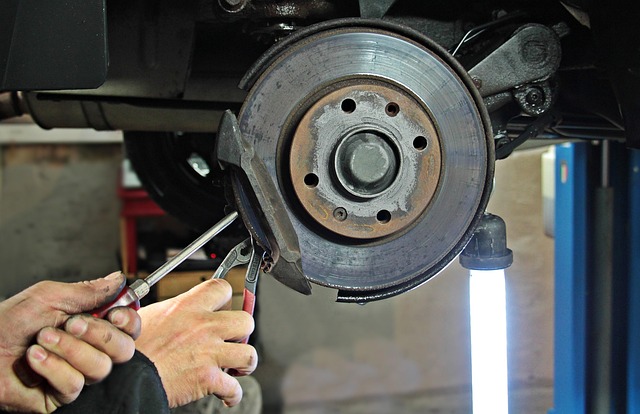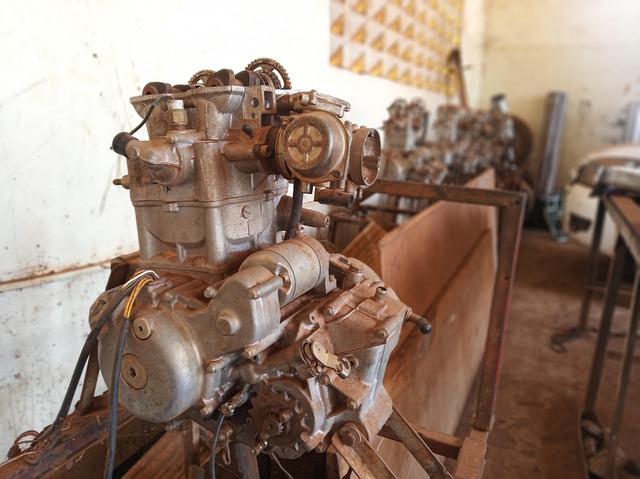After an accident, while physical repairs are crucial, diminished value claims are essential to understand as they refer to the reduction in a vehicle's resale value due to damage. Despite successful body shop services like paint repair, factors such as repair costs and damaged history can decrease the overall market worth of the vehicle. Knowing diminished value claims helps accident victims ensure fair compensation and effectively navigate post-accident financial scenarios. Efficient restoration techniques can minimize this impact, but owners should be aware of potential future sales challenges.
After accidents, diminished value claims play a significant role in compensating victims for non-monetary losses. These claims represent the reduction in an vehicle’s value due to damage incurred during an accident. Understanding what these claims are and why they matter is crucial for accident victims navigating post-accident scenarios. This article delves into how diminished value is assessed, the process of filing claims, and the rights and resources available to victims.
- Understanding Diminished Value Claims: What They Are and Why They Matter After Accidents
- How Diminished Value is Assessed and Calculated in Post-Accident Scenarios
- Navigating the Process of Filing and Pursuing Diminished Value Claims: Rights and Resources for Accident Victims
Understanding Diminished Value Claims: What They Are and Why They Matter After Accidents

After an accident, it’s not just about physical repairs; there’s another aspect that often goes unnoticed—diminished value claims. These claims refer to the reduction in a vehicle’s value following damage, which can significantly impact owners’ financial outcomes. When a car undergoes accidents, even with successful repairs through body shop services like vehicle paint repair, its resale value may decrease due to various factors. This includes the cost of repairs, which can vary depending on the extent of damage, affecting the overall market worth of the vehicle.
Understanding diminished value claims is crucial for accident victims. It’s not just about getting your car fixed; it’s also about ensuring you’re compensated for any loss in value. Efficient vehicle restoration techniques can help minimize this impact, but owners should be aware that a damaged history can affect future sales. Thus, knowing the ins and outs of diminished value claims is essential to navigate post-accident financial scenarios effectively.
How Diminished Value is Assessed and Calculated in Post-Accident Scenarios

In post-accident scenarios, assessing diminished value (DV) involves a meticulous process that considers various factors. The initial step is to establish the pre-accident condition of the vehicle, including its make, model, age, and overall condition. This baseline is crucial for comparing the vehicle’s post-incident state, where damage from accidents or collisions can significantly impact its worth. Auto collision centers often employ specialized tools and expert appraisers to conduct comprehensive inspections, identifying both visible and hidden damages that might require extensive repairs, like dent removal.
Calculating DV involves quantifying the reduction in a vehicle’s value due to the accident. This is typically done using advanced valuation methods and data from vehicle repair services. Factors such as the severity of damage, availability of replacement parts, and time required for repairs play significant roles in determining the extent of DV. For instance, a dent that requires intricate removal and repainting might contribute more to reduced value than a minor scratch. These calculations are essential for diminished value claims, ensuring owners receive fair compensation for the loss in their vehicle’s market value post-accident.
Navigating the Process of Filing and Pursuing Diminished Value Claims: Rights and Resources for Accident Victims

Navigating the process of filing and pursuing diminished value claims can be a complex task for accident victims. After a collision, vehicles often sustain damages that extend beyond what’s visible on the surface—hidden issues like dented panels, compromised structural integrity, or faded paint jobs can significantly impact a car’s resale value. These hidden scars, while not immediately apparent, can lead to a significant decrease in the vehicle’s overall market worth.
Accident victims who suspect their vehicle’s diminished value have rights and resources available to them. Filing a diminished value claim involves gathering comprehensive documentation, including detailed repair estimates for both visible and hidden damages, appraisals from certified automotive experts, and evidence of the pre-accident market value. Engaging with reputable auto body shops for repairs, such as those specializing in frame straightening or car paint repair, can ensure thorough documentation of all repairs made. By presenting a strong case, victims can pursue compensation to restore their vehicle’s worth, ensuring they’re not left with a financial burden amidst the aftermath of an accident.
Diminished value claims are a crucial aspect of post-accident compensation, ensuring that victims receive fair recognition for the reduced value of their vehicles. By understanding how these claims work and navigating the process effectively, accident victims can access the resources they deserve. This article has provided an overview of diminished value assessments, calculation methods, and the rights available to claimants. Remember that, in light of the above, filing a diminished value claim is not just about financial restitution but also about holding at-fault parties accountable for their actions.














